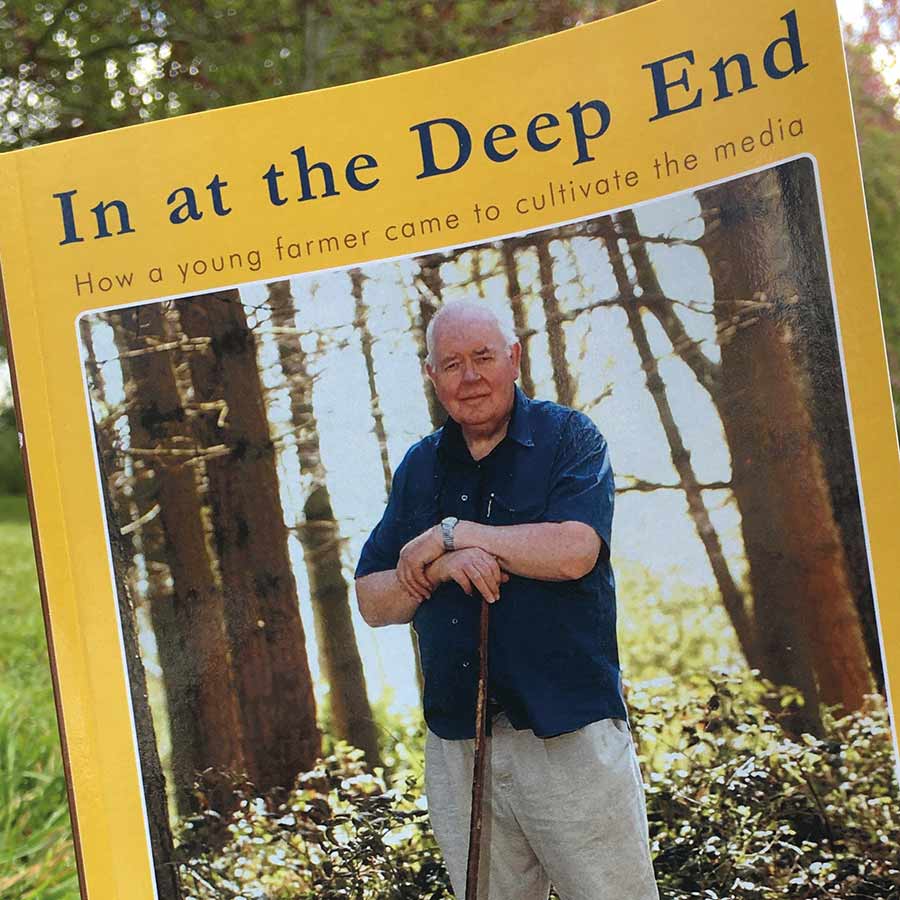10 tips to turn your farming story into a riveting read
 © Adobe Stock/Page Light Studios
© Adobe Stock/Page Light Studios We’ve all got a book in us, so the saying goes – and most farmers have certainly got a memoir in them.
Farmers Weekly columnist David Richardson, whose updated memoirs have just hit the shelves, shares some advice on how to make it happen.
See also: David Richardson – Reform needed to make farm tenancies fit for purpose
1 Have a plan
Creating a structure is crucial and, while you may not ultimately stick to this, it will help guide you.
A good way to start is to simply make a list of the important elements – and highlights – of your life.
You could group them under headings such as family, farming, personal achievements, challenges and low points. Life, of course, isn’t divided into neat boxes and a lot of these will overlap and be interconnected.
But I’d advise encapsulating specific subjects into specific chapters rather than trying to tell your story chronologically with the chapters headed by date, as that can result in each chapter becoming a mishmash of too many topics.
2 Don’t begin at the beginning
Resist the temptation to start with “I was born on…”.
Far better to open with a key event or what you are best known for. This will grab readers’ attention and make them want to hear the rest of your story. You can always return to your birth and childhood later, if need be.
I started with an account of meeting a chap called Dick Joice when I was in my early twenties, as this got me involved in TV and changed the course of my life.
If you’re a cattle farmer and you won a championship at the Royal Show, start with the moment the judge pins the rosette on your animal.
3 Take-away message
If you have one key point you want readers to remember, build it through the text towards a conclusion near the end.
For me, it’s the topic of food security. I was making this point as far back as 2007 when I wrote a paper saying we needed to adopt genetic modifications, understand the value of agriculture and recognise that we are set to run short of food in a few years’ time.
It’s still as vital as ever, but we must, of course, also remember the importance of environment and climate change.
4 Include bad things, too
Try not to sugar-coat events. Not everything in my life has gone well, but I decided it would be less than honest to not include the aspects that have been difficult.
If you’re mentioning family members – which you invariably will be – discuss it with them and show them what you’re proposing to write, so they don’t get any nasty surprises.
A memoir needs light and shade. Above all, a memoir should be honest, true and authentic – the reader should be able to hear the author’s voice.
5 Use photos
The stronger the pictures, the better the book. You can use ones from your archives and, of course, take new ones. Using black and white shots helps keep costs down, but I recommend using a coloured photo on the cover.
Digital technology means good images are easier to take these days, although having a good camera isn’t necessarily the same as being a good photographer!
6 Edit your work
Re-read what you’ve written at least once (and ideally more) and ask others to read it to check facts, dates, spelling, grammar – and to make sure the story flows well.
You need someone you trust – and someone who reads a lot. Part of their job might be to tell you to leave some stuff out if it’s boring!
7 When to write
I wrote a couple of chapters then had to put the project aside for six months, but when I got going again I finished a draft in a few weeks.
Farmers don’t have the luxury of much spare time, so make the most of any relatively quiet moments you do get.
Getting into a writing routine can help, as can jotting notes on a pad or your phone voice recorder when you’re out on the farm.
8 Find the right editor
It’s not easy to find a publisher, but it’s important that you like and respect your editor. Ideally, they’ll have buckets of enthusiasm for your book and share your vision.
It’s like farming: you need to have a good personal relationship with – and trust – the people you work with. These days, self-publishing is a perfectly respectable and potentially profitable business model, too.
9 Know your motives
Getting a book onto the shelves will take a lot of time and effort, and perhaps bring some disappointments along the way.
It’s unlikely that it will be a big moneymaker, but it’s hugely rewarding and will help future generations of your family to know where they came from.
10 Publicity
Covid has put a lot of potential events on hold, but talks, after-dinner speeches and using social media are great ways to fly the flag for your book.
The first time I tweeted about the new edition of my book, I got 75 “likes” almost straight away. That didn’t mean all of those people would buy a copy, of course, but it was a good sign.
In at the Deep End by David Richardson
The revised and updated edition tells David Richardson’s story from wartime privations and ration books, through surpluses and set-aside, to environmental priorities and Linking Environment and Farming (Leaf), of which he was the founder chairman.
The Norfolk farmer charts his journey from cub reporter to commentator, covering his life from Young Farmers’ Clubs to chairing the Oxford Farming Conference.
Published by Tricorn Books, price £12.99.

© David Richardson
